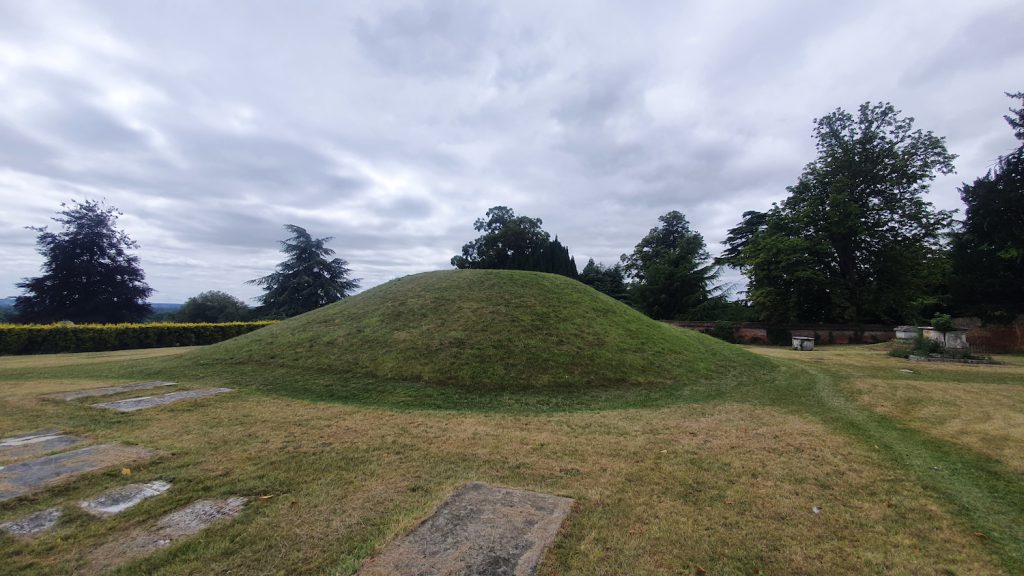Culture—Not Genetics—Was More Salient for Anglo-Saxons

This article was originally published at The Conversation and has been republished under Creative Commons.
Scholars have long been fascinated by the Anglo-Saxon period of British history, which spans approximately 600 years, from the end of Roman rule in around A.D. 410 to the start of the Norman conquest in A.D. 1066. Unfortunately, because very few contemporary documents are available, a number of important questions about the early part of the period remain unanswered. One of these is: “Who were the Anglo-Saxons?”
There is general agreement that their origins can be traced to a migration of Germanic-speaking people from mainland Northwest Europe that began in the early fifth century. But the number of individuals who settled in the British Isles and the nature of their relationship with the preexisting inhabitants, especially the Romano-British, is still unclear.
Conflicting evidence
Uncertainty persists because two of the main lines of evidence contradict each other. Historical documents such as Gildas’ The Ruin of Britain, Bede’s Ecclesiastical History of England, and The Anglo-Saxon Chronicle suggest not only that the incomers were numerous, but also that they more or less completely replaced the Romano-British, killing some and pushing the rest to the peripheries.
This picture is not supported by the results of isotopic analyses. Isotopes are different forms of a chemical element that can be distinguished by their atomic masses and physical properties. Isotopic analysis can help determine where an individual grew up.
When isotopes of strontium and oxygen extracted from Anglo-Saxon skeletons have been compared, they have pointed to only a few of the individuals having grown up in mainland Europe. This has been interpreted as evidence that the Romano-British were not replaced. Rather, they adopted a new language and set of values, beliefs, and cultural practices from a relatively small number of incomers.
Frustratingly, genetic studies have not been able to clarify the debate. They have returned such a wide range of estimates of the percentage of mainland European ancestry in England that they can support either hypothesis.
A new line of evidence
Recently, we published a study in which we used a new line of evidence to investigate the issue: the three-dimensional (3D) shape of the base of the skull, which bioarchaeologists usually call the cranial base or basicranium.
Previous research has shown that when the basicranium is analyzed in 3D, its shape can be used to track relationships among human populations in a similar way to DNA. We reasoned that collecting such data from Anglo-Saxon skulls and comparing them to similar data from the two potential source regions might shed light on the composition of the Anglo-Saxon population.
We think most likely there was an increase in the number of local people adopting an Anglo-Saxon identity through time.
Our Anglo-Saxon sample comprised 89 individuals from five cemeteries in the English counties of Cambridgeshire, Suffolk, and Kent. Three of the cemeteries date to the early Anglo-Saxon period (A.D. 410–660) while the other two date to the middle Anglo-Saxon period (A.D. 660–889). We also collected data on 101 pre-medieval skeletons from two sites in Southern England and 46 individuals from various sites in Denmark that date to the Iron Age (800 B.C.–A.D. 399).
To obtain the landmark data, we employed a technique called photogrammetry. We imported 200 photos of each of the 236 skulls (minus the lower jaw) into a software program to create a high-resolution 3D model of each skull. We then used another software program to collect the 3D coordinates of a series of landmarks on the cranial base of each individual.
Indications of mixed ancestry
Once we had collected the data, we used a set of statistical techniques called geometric morphometrics (GM) to identify similarities and differences in shape among the four groups: early Anglo-Saxons, middle Anglo-Saxons, pre-medieval British, and pre-medieval Danish.
Developed in the 1980s, GM has long been an important tool in the study of human evolution, but it has only recently been embraced by bioarchaeologists. GM allows patterns of shape variation to be investigated within a well-understood statistical framework and yields easily interpreted numerical and visual results. In our GM analyses, Anglo-Saxon skulls that shared more similarities with the pre-medieval British skeletons were considered to have local ancestry, while those that were more similar to the Danish skeletons were deemed to have mainland European ancestry.
The results we obtained suggested a substantial difference between the early Anglo-Saxon period sample and the middle Anglo-Saxon period. We found that between 66 percent and 75 percent of the early Anglo-Saxon individuals were of mainland European ancestry, while between 25 percent and 30 percent were of local ancestry. In contrast, we found that 50 percent to 70 percent of the middle Anglo-Saxon period individuals were of local ancestry, while 30 percent to 50 percent were of mainland European ancestry.
Shared descent for the Anglo-Saxons and the Vikings was not a requirement for membership in either group.
While our estimates of the percentage of Anglo-Saxons who had mainland European ancestry fall comfortably within the range of estimates derived from genetic data, they contradict the picture painted by both the historical documents and the isotopic evidence. Specifically, our estimates suggest that there was greater persistence of the Romano-British population than the historical documents claim and a larger number of immigrants than the isotope evidence has been taken to indicate.
We think these discrepancies can be explained relatively easily. It seems likely that the mismatch between our results and the historical documents relates to the fact that the documents were written long after—in some cases, several hundred years after—the migration, and therefore are of questionable accuracy, which a number of scholars have argued.
We suspect the difference between our results and the isotopes may be the consequence of a misunderstanding. While strontium and oxygen isotopes are informative about where an individual grew up, they don’t tell us about a person’s ancestry. Hence, it is feasible that some, if not all, of the individuals with local isotopic signatures were second-generation immigrants—that is, their parents originated in mainland Europe but they themselves were born and raised in the British Isles.
Language and culture, not genetics
There are several potential explanations for the change in composition of the Anglo-Saxon population between the early Anglo-Saxon period and the middle Anglo-Saxon period, but we think the most likely is that there was an increase in the number of local people adopting an Anglo-Saxon identity through time.
This could have been because being Anglo-Saxon was perceived as higher status than being Romano-British. Alternatively, it could simply have been a consequence of people randomly copying one another. This process, which is known as “cultural drift,” has been shown to be able to account for a number of cultural patterns in recent history.
Regardless of the cause of the change in composition, it is clear from our results that being an Anglo-Saxon was more a matter of language and culture than genetics.
Interestingly, this echoes results obtained in the largest ancient DNA study of Vikings published to date. In this study, a number of individuals who were buried as Vikings were found to be of local ancestry, which suggests that being a Viking was also a linguistic and cultural phenomenon rather than a genetic one.
The Anglo-Saxons and Vikings are often viewed in racial terms, with common biological descent deemed to be a key aspect of both groups. However, the results of our study and the Viking DNA one indicate that shared descent was not a requirement for membership of either group.
Instead, it appears that the Anglo-Saxons were a group of individuals of diverse ancestries who shared a common language and culture. The same holds for the Vikings. The Anglo-Saxons and Vikings were, in other words, strikingly similar to the multiracial societies of contemporary Northern Europe.





























